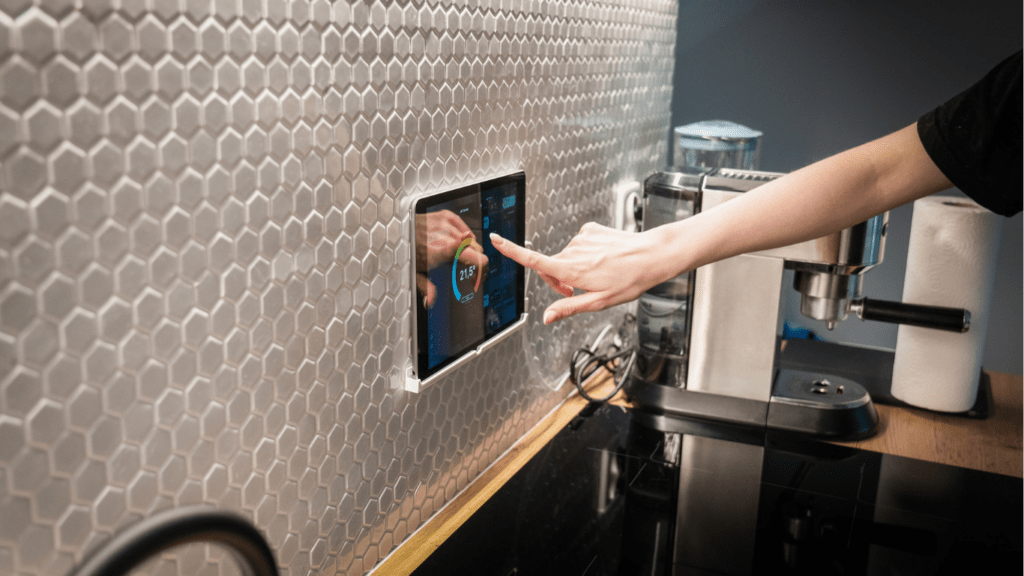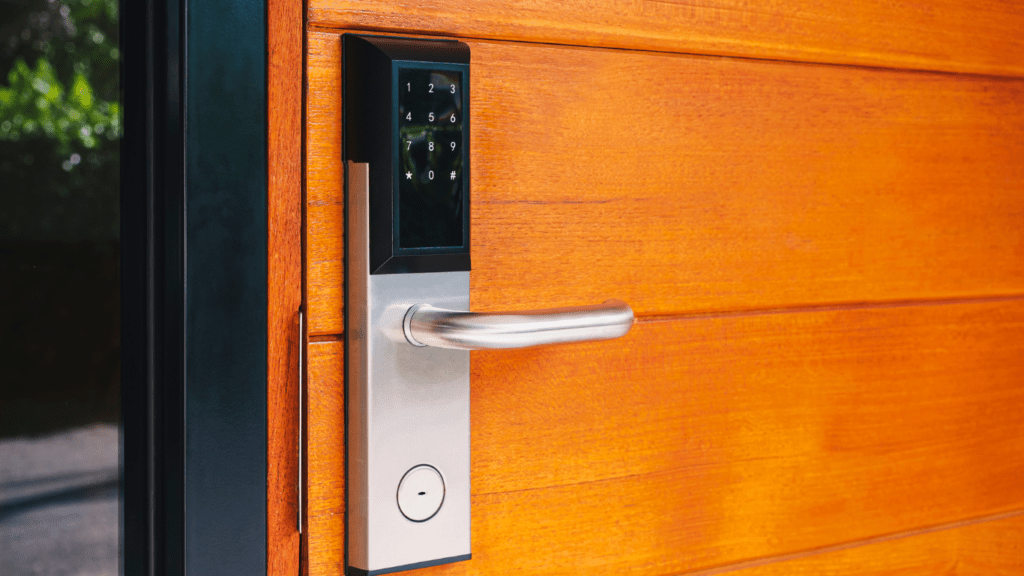Understanding Smart Home Design
Smart home design revolves around incorporating technology seamlessly into living spaces. It goes beyond the mere installation of gadgets, focusing on creating an environment where devices communicate and simplify daily life. For instance, integrating voice assistants like Alexa or Google Home can control lighting, adjust thermostats, and even play music with simple voice commands.
When designing a smart home, connectivity is critical. Ensuring all devices use the same network protocol, like Wi-Fi or Zigbee, avoids compatibility issues. A central hub, often paired with a mobile app, manages these connected devices. This centralization allows for coordinated actions, such as setting a “Good Night” routine that locks doors, turns off lights, and lowers the thermostat.
Aesthetic considerations also play a role in smart home design. Devices should blend with the home’s decor rather than stand out. Many modern smart devices come in sleek, minimalistic designs or offer customizable options to match interior styles.
Energy efficiency is another key factor. Smart thermostats learn usage patterns and adjust heating or cooling to reduce energy consumption. Intelligent lighting systems can dim or turn off lights based on occupancy, creating an eco-friendly home environment.
Security enhancements are a significant aspect of smart home design. Smart locks, doorbell cameras, and motion detectors integrate to provide comprehensive home security. They offer remote monitoring and alerts, adding a layer of safety and convenience.
By understanding these components, you can effectively integrate technology into your living space, transforming it into a cohesive, functional, and intelligent home.
Key Technologies in Smart Homes
Smart homes offer numerous technologies to enhance comfort, security, and efficiency. Key technologies focus on lighting, climate control, and security systems, transforming living spaces into intelligent environments.
Smart Lighting
Smart lighting provides convenience and energy savings. Options like Philips Hue and LIFX bulbs connect to home networks, allowing control via smartphones and voice assistants. Users can adjust brightness, color, and schedules remotely. With motion sensors, lights turn on when entering a room, improving security and reducing unnecessary energy use.
Intelligent Climate Control
Climate control systems like Nest and Ecobee offer intelligent features. These smart thermostats learn preferences and adjust settings for optimal comfort. Integration with weather data ensures efficient heating and cooling. Remote control via mobile apps allows temperature adjustments from anywhere, enhancing energy efficiency and cost savings.
Home Security Systems
Home security systems integrate cameras, locks, and alarms for comprehensive protection. Brands like Ring and Arlo provide video monitoring accessible remotely. Smart locks from August allow keyless entry, while integration with alarm systems provides real-time alerts. Advanced systems support facial recognition and activity zones, offering tailored security solutions for peace of mind.
Designing a Smart Home
Integrating technology into a living space transforms it into a smart home. Consider several aspects to achieve a cohesive, functional setup.
Planning and Budgeting
When planning a smart home, outline goals. Identify which areas benefit most from automation, like:
- lighting
- security
- climate control
Set a budget to manage expenses and avoid overspending. Research product costs and installation fees to create an accurate financial plan.
Choosing the Right Devices
Selecting the right devices is crucial. Opt for products that meet specific needs and are compatible with one another. Review devices like smart thermostats, lighting systems, and security cameras. Ensure they support common protocols like Wi-Fi, Zigbee, or Z-Wave for seamless integration. Explore product reviews and user feedback to make informed decisions.
Integrating Smart Technology Seamlessly

Incorporating smart technology into your home requires careful planning to ensure it blends with your space harmoniously. Below, I dive into aesthetic considerations and connectivity and compatibility aspects for a more integrated smart home environment.
Aesthetic Considerations
Balancing functionality and style is key in smart home design. Sleek and minimalist smart devices complement modern decor. For instance, opt for smart light switches and outlets from brands like Lutron or Belkin, which offer discreet designs. Wall-mounted tablet controllers and in-ceiling speakers can be flush-mounted for a clean look.
Coordinate colors and finishes of smart devices with existing furnishings. Choose products available in customizable varieties, such as Philips Hue light fixtures that can match any room’s color palette. Integrate smart displays like the Google Nest Hub into common areas, placing them on stylish stands or shelves.
Conceal wires and hubs to maintain a clutter-free environment. Use cable organizers or run wires behind walls whenever possible. Custom cabinetry can also house and hide bulky equipment.
Connectivity and Compatibility
Ensuring seamless operation hinges on proper connectivity. Central hubs like Samsung SmartThings or Apple HomeKit can unify various devices, reducing the need for multiple apps. Reliable Wi-Fi coverage is critical for consistent performance, so consider mesh networks from brands like Eero or Google Nest Wi-Fi for large or multi-story homes.
Choose compatible devices to avoid integration issues. Refer to the compatibility lists provided by central hub manufacturers to ensure new purchases will work smoothly with existing technology. Devices supporting standard protocols like Zigbee and Z-Wave often offer better interoperability.
Security is another critical facet. Enable WPA3 encryption on your Wi-Fi network for enhanced protection. Regularly update firmware for all devices to protect against vulnerabilities. Set up guest networks for visitors to keep your primary network secure.
Effective integration of smart technology demands thoughtful aesthetic and technical decisions. By carefully selecting and placing devices, you can create a seamless and stylish smart home experience.
Benefits of Smart Home Design
Smart home design offers numerous advantages, making daily living more comfortable and efficient.
Enhanced Comfort and Convenience
- Smart home technology greatly enhances comfort and convenience.
- Devices like smart thermostats and lights can be controlled remotely, allowing personalized settings that match daily routines.
- When I use a learning thermostat that adjusts the temperature based on my schedule, ensuring optimal comfort when I’m home and saving energy when I’m not.
- Voice assistants like Amazon Alexa or Google Assistant streamline tasks, enabling hands-free control of various home functions from playing music to adjusting lighting.
- Automated routines make waking up or going to bed smoother by seamlessly adjusting environmental settings.
Energy Efficiency and Cost Savings
Energy efficiency and cost savings are significant benefits of smart home technology. Smart thermostats, like Nest and Ecobee, learn user habits to optimize heating and cooling, which reduces energy consumption. I noticed a decrease in my utility bills after installing smart lighting systems like Philips Hue, which can be programmed to turn off when not in use or dim during certain times of the day. Energy monitoring devices provide insights into high-consumption appliances, helping to identify areas for further savings. Smart home systems ensure that resources aren’t wasted, leading to financial savings over time.
Potential Challenges and Solutions
Integrating smart technology into homes comes with several challenges. It’s essential to address these issues to ensure a seamless smart home experience.
Compatibility Issues
Different brands often use proprietary systems, making device integration difficult. Ensuring compatibility involves researching products that support common protocols like Zigbee, Z-Wave, or Wi-Fi. For example, Samsung SmartThings and Apple HomeKit offer broad device compatibility, simplifying integration.
Network Stability
A reliable network is crucial for smart devices to function correctly. Weak or inconsistent Wi-Fi signals can disrupt connectivity. Installing a robust mesh network helps maintain consistent coverage throughout your home. Products like Google Nest WiFi or Eero mesh systems enhance network reliability.
Security Concerns
Smart homes can be vulnerable to hacking. Using strong passwords, enabling WPA3 encryption, and regularly updating device firmware mitigates security risks. Also, consider two-factor authentication for added protection.
High Initial Costs
The upfront cost of smart home devices can be high. Prioritizing essential areas like security, lighting, or climate control helps manage expenses. Over time, energy savings from efficient systems offset initial costs. For instance, smart thermostats like Nest can reduce heating and cooling bills by learning user preferences.
User Complexity
Advanced features can overwhelm new users. Opt for devices with intuitive interfaces and robust customer support. Companies like Amazon and Google provide extensive user guides and 24/7 support. Additionally, voice assistants simplify device management with voice commands.
Addressing these challenges ensures a smooth transition to a smart home, maximizing the benefits of integrated technology.



 Smart Home Technology Consultant
Meagan Kanedooray serves as Luxe House Maker’s smart home technology consultant, with extensive experience in integrating advanced tech into luxury homes. Specializing in home automation, security systems, and energy-efficient solutions, Meagan helps readers transform their living spaces into seamless, tech-enabled environments. Her expertise in cutting-edge technologies ensures that Luxe House Maker’s audience stays informed about the latest innovations that enhance convenience, safety, and sustainability in luxury living. Meagan’s deep understanding of smart home trends makes her an invaluable resource for those looking to elevate their homes with the latest advancements in technology.
Smart Home Technology Consultant
Meagan Kanedooray serves as Luxe House Maker’s smart home technology consultant, with extensive experience in integrating advanced tech into luxury homes. Specializing in home automation, security systems, and energy-efficient solutions, Meagan helps readers transform their living spaces into seamless, tech-enabled environments. Her expertise in cutting-edge technologies ensures that Luxe House Maker’s audience stays informed about the latest innovations that enhance convenience, safety, and sustainability in luxury living. Meagan’s deep understanding of smart home trends makes her an invaluable resource for those looking to elevate their homes with the latest advancements in technology.
